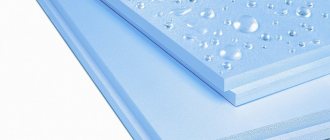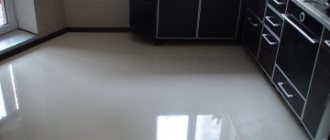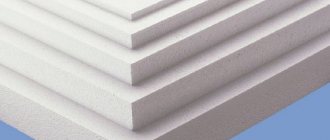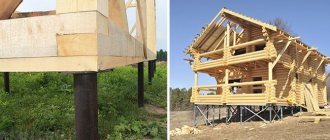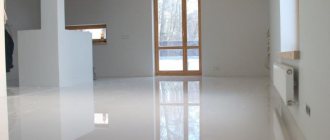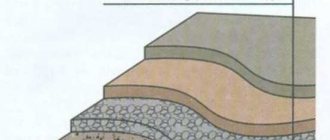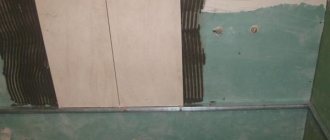How to cover a concrete floor in a garage
So, the question of the article is simple: how to cover a concrete floor in a garage so that it, at a minimum, does not generate dust, and at a maximum, repels liquids, including oils and gasoline. There are 5 solutions to this problem.
- Prime the concrete floor in the garage with primer;
- Install a polymer self-leveling floor;
- Paint the floor with polymer paint for concrete;
- Install a rubber floor in the garage (5 options);
- Cover the floor with clinker tiles;
- Cover the floor with PVC tiles.
In describing the solutions, we will go from simple to complex or from cheap to expensive, as you like.
Prime your garage floor with primer
Primer is a construction primer. The main purpose of the primer is to remove dust from the surface and improve its adhesion (adhesion). In addition, special primers for concrete (impregnations), penetrating 1-5 mm, create a reinforcing layer of concrete and are an independent coating for the concrete floor. In appearance, such floors can be called “varnished concrete”.
The following concrete impregnations can be found on sale:
- Polyurethane impregnation of concrete floors. Penetration depth 2-4 mm.
- Deep penetration impregnation. Suitable for concrete of any porosity. Does not require complete drying of concrete. Penetration depth 4-5+ mm.
- Epoxy impregnation of concrete floors. This impregnation does not smell when used. Penetration depth 1-2 mm.
- Fluat impregnation of concrete floors. It is made on the basis of water and water-emulsion compositions. This impregnation does not burn. Penetration up to 5 mm, maximum efficiency in strengthening concrete (up to 50%).
- Acrylic impregnation of concrete floors. This impregnation is used for non-or lightly loaded floors. Most often used for temporary protection of floors.
All floor impregnations are applied in 1-4 layers, depending on the brand of concrete used.
Popular primer compositions
Among the primers that are in demand in the building materials market are primer compositions of the following brands:
- Ceresit CT 17. universal impregnating composition of deep penetration. Maintains the permeability of the surface layer. Adding a coloring pigment to the composition simplifies the application of the primer.
- Knauf Tiefengrud. A universal primer with high penetrating ability. Designed for impregnation of super-hygroscopic materials.
- Knauf Concrete contact. The primer is a polymer dispersion with pink quartz sand. The product is ready to use. Designed for coating poorly absorbent substrates.
Different dyes may have specific applications. Therefore, before painting, you must read the instructions and follow the manufacturer’s recommendations.
Painting a concrete floor in a garage
Conventional paints (oil, nitro, etc.) are not suitable for painting the garage floor. Special polymer-based paints are produced to protect concrete floors. Polymer paint is two-component. Before applying the paint, the two paint components are mixed. You can find the following types of polymer paint coatings on sale.
- Polyurethane coating;
- Epoxy coating;
- Polyurethane coating with sand;
- Polyurethane acrylic;
- Polymer concrete coating.
Polymer self-leveling floor in the garage
Polymer bulk has a second name, liquid linoleum. This is an expensive, two-component coating used like self-leveling concrete floors. Requires serious preparation of the base; it is prepared from two components directly during use.
According to technologies, there are the following polymer self-leveling floors (LP):
- Epoxy NP;
- Polyurethane NP;
- Self-leveling floor with flocks;
- White NP
- 3d floor
- Transparent self-leveling floor
- Conductive self-leveling floor
- Antistatic, without tape floor
Only the first three of the listed polymer floors are suitable for a garage.
Design
By skillfully using these materials, designers create reliable and durable interiors, whose style is almost beyond time and fashion trends. Concrete today is a source of inspiration for many advanced designers and architects. This material allows you to create different textures on the walls, has a pleasant neutral gray color, which combines perfectly with other materials: wood, stone, brick and metal.
With concrete in the interior, as with other materials, it is important not to overdo it. Everything should be in moderation and correctly arranged according to colors. You should remember about two or three primary colors in the design of the room, diluted with colored “accents”. It is important not to allow one material to completely dominate. In a room where three of the four walls are concrete, and the floor is also concrete, you will probably feel like you are in a basement.


